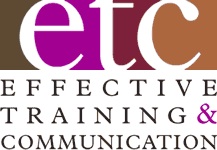(As part of my Social Media strategy, I regularly engage in discussions with several presentation-oriented Linked In groups. Here’s a summary of some recent posts regarding PowerPoint.)
Often, the best PowerPoint advice I offer in my workshops or coaching engagements is not to use slides at all. Everyone uses PowerPoint and most people abuse it. Walking into a meeting room with the lights dimmed, the projector on and a title slide up often sets up expectations of more painful ‘Death by PowerPoint’. Not a great way to begin a presentation. PowerPoint can also imply a canned lecture and the absence of interactivity. Again, more negative connotation baggage.
I avoid PowerPoint in most of my workshops. About an hour in, I ask people how many have noticed the lack of slides. All raise their hands. I then ask them how many mind that I’m not using slides. No hands go up. I often get positive comments about the lack of slides.
If that’s too extreme for workplace presenters, I understand. I like being extreme, but it doesn’t work for everyone. Then, here is a summary of the Best Practices I share in my workshops:
- Avoid ‘Death by PowerPoint’ – it’s cruel and unusual punishment and should be declared unconstitutional.
- PowerPoint should be viewed as the frosting, not the cake; the sizzle, not the steak.
- Use it because you should, not because you can. Always ask ‘How does this component add value to the audience, my intended outcomes and my professional image?’
- Less is more and bigger is better.
- You don’t need a slide up all the time – only when one is adding value to the content and the audience’s ability to understand, absorb and retain the information. In between those slides, hit ‘B’ on the lap top keyboard and the screen goes black. Hit ‘B’ again and the slide comes back on.
- Don’t read the slides to people. The can easily do that themselves. Share and highlight the information on them instead.
- Use color effectively to make them more visually interesting, but avoid black backgrounds except for occasional dramatic impact. And make sure there is good contrast between background colors or patterns and the copy.
- Avoid ‘cute’ animation or sound effects unless they’re supporting the content on the slide. ‘Cute’ gets old, stale and lame very fast.
- If you ever catch yourself saying ‘I know you probably can’t read this’, you’re really screaming ‘I’m either too lazy or too dumb to make a better slide for you.’ Not a good message to deliver to your audience.
- The most powerful, memorable and effective information we can put on a slide is often pictures, yet most business presentation slides are only word – the least effective. Go figure.
So, PowerPoint slides should be a tool to enhance the communication process and project presenter credibility and competence, not detract from it. Bottom line – if your presentation can’t work without the slides, it probably wouldn’t work with them.


One Comment
Thanks, Phil!!
This is my favorite part of the October Newsletter: “Learn a simple technique from the Varsity Presenters. Instead of connecting Sub Points in a linear manner, ‘A’ – ‘B’ – ‘C’, reconnect each to your Main Point to reinforce it, ‘A’ – MP – ‘B’ – MP – ‘C’. The rationale is the more often they hear a concept, the greater the chance they’ll remember it.”
I believe the rationale (and think adult learning theory is that it takes 6-8 exposures for something to “stick.” This is a good means to that end!
Best,
Gary